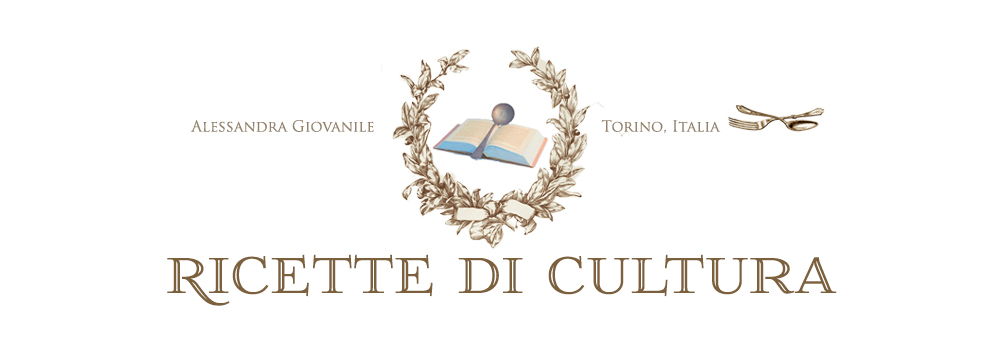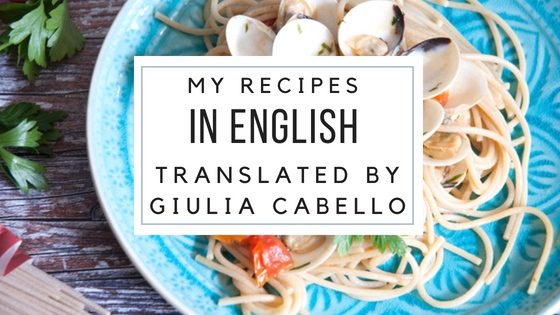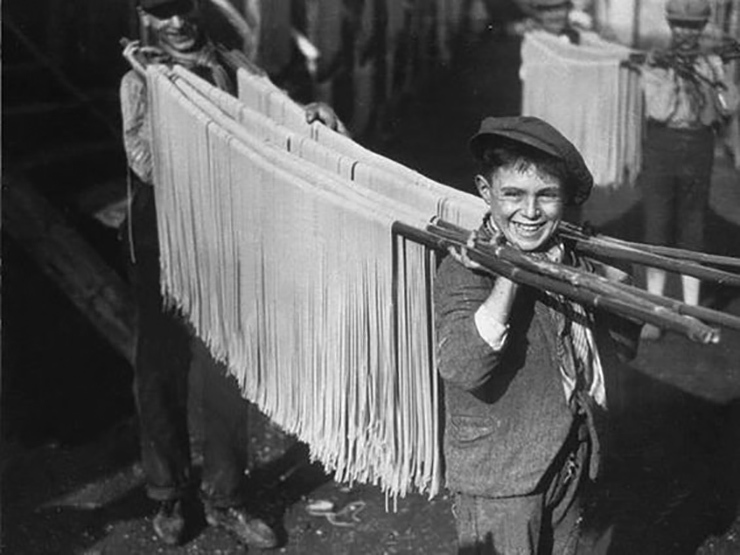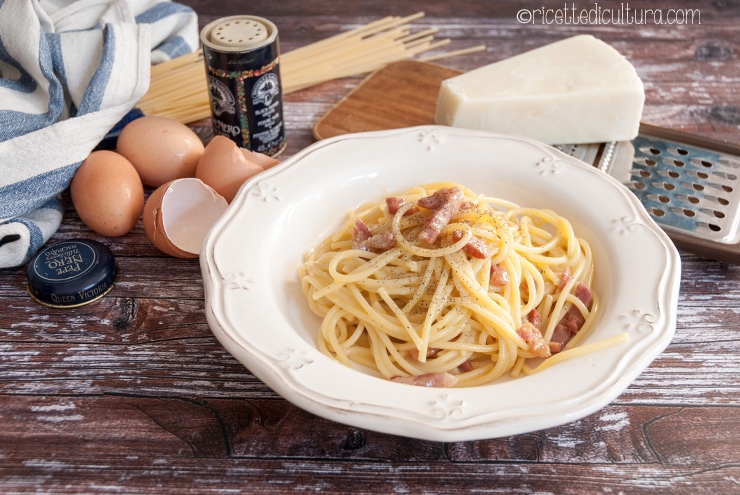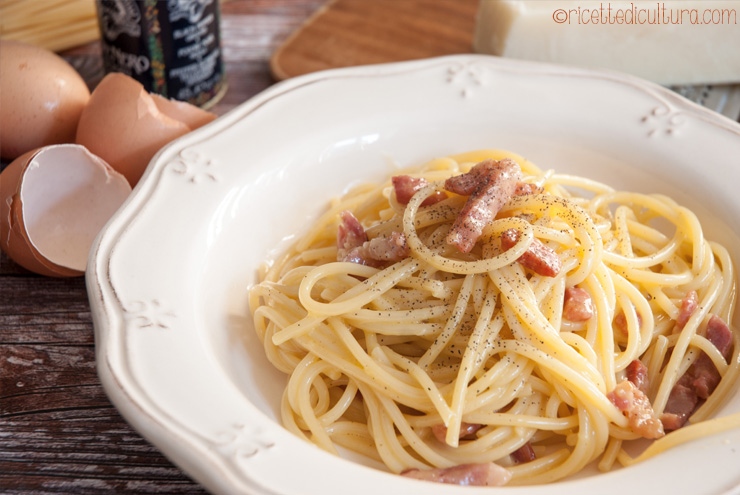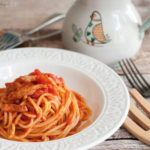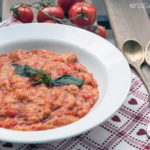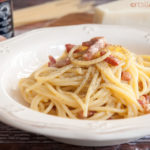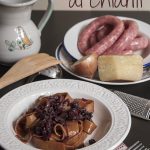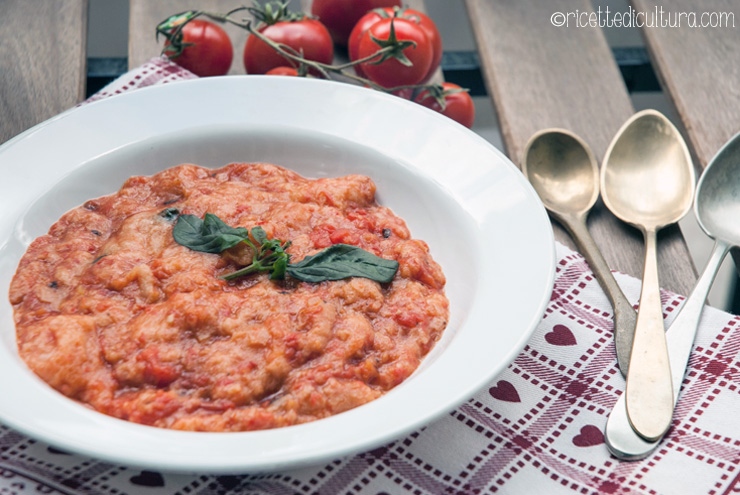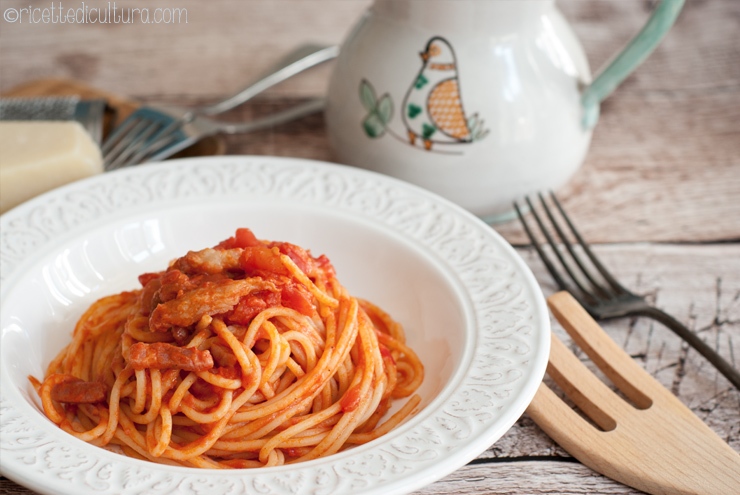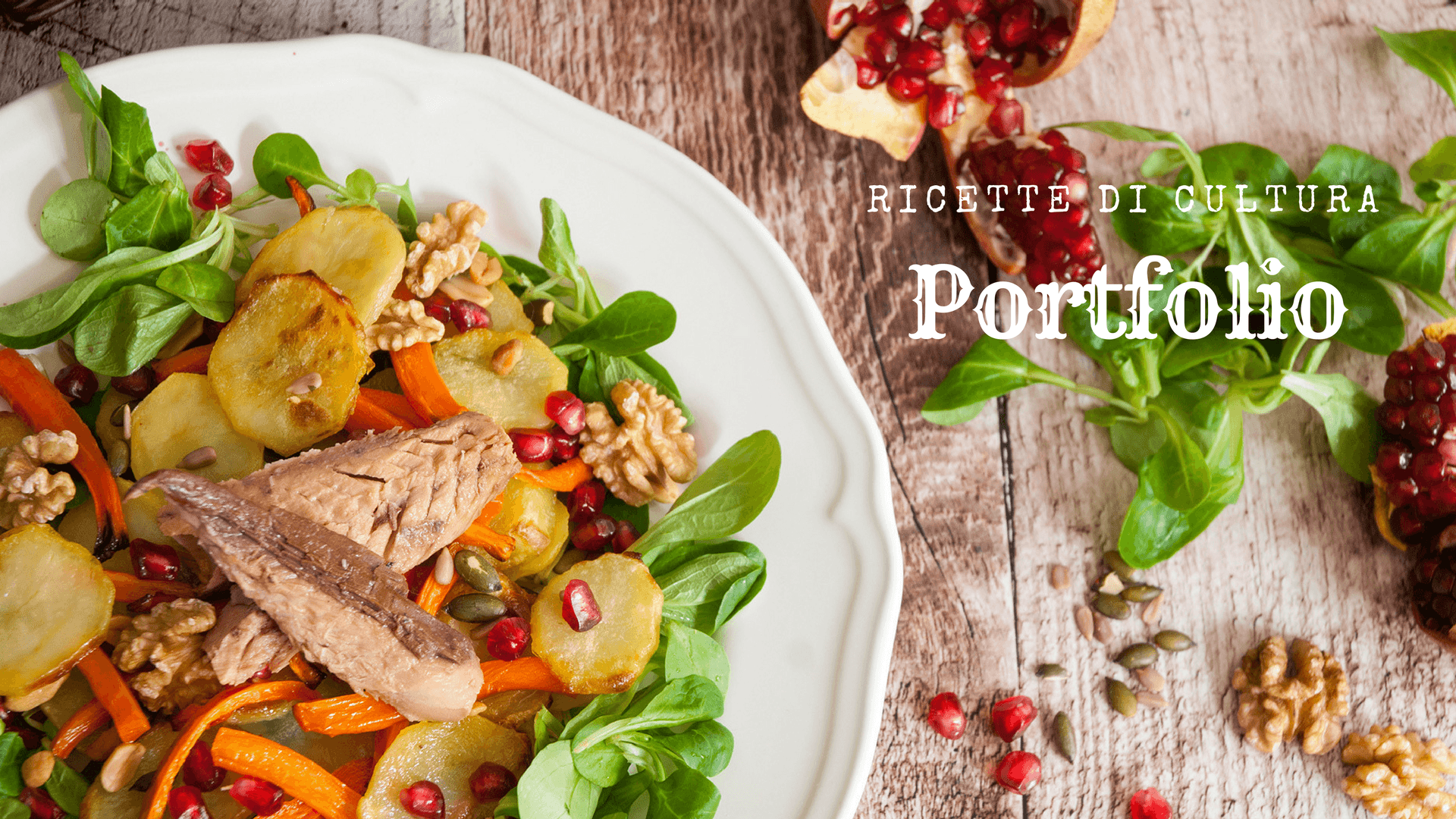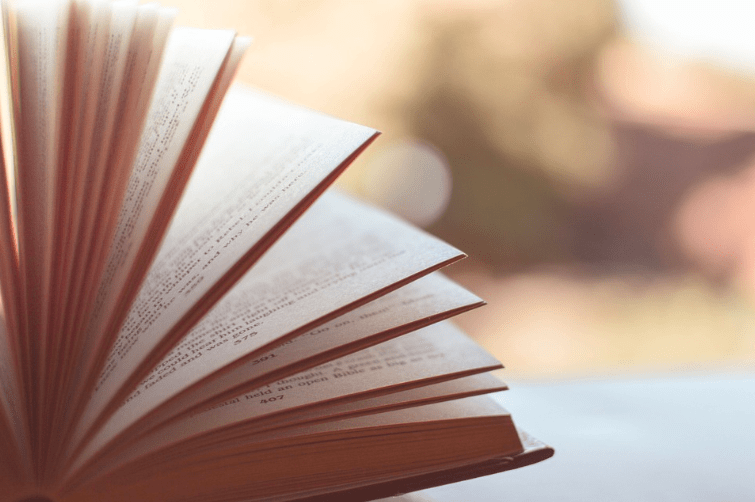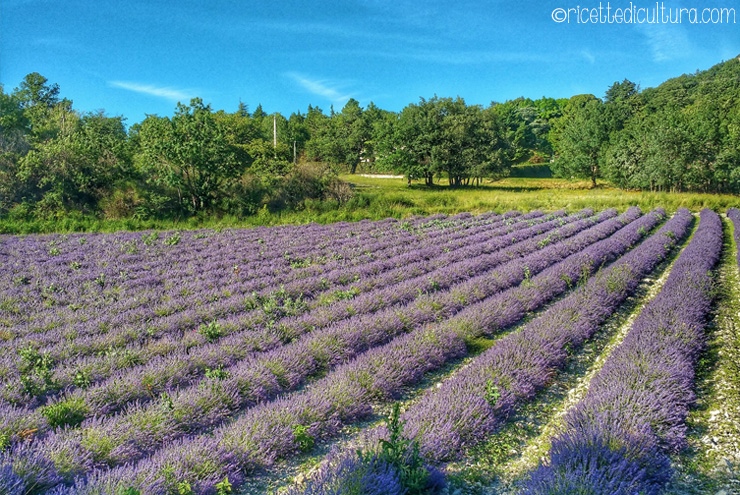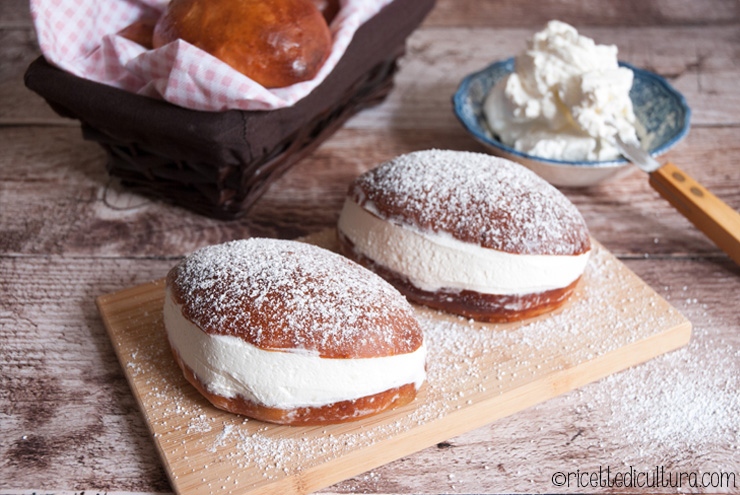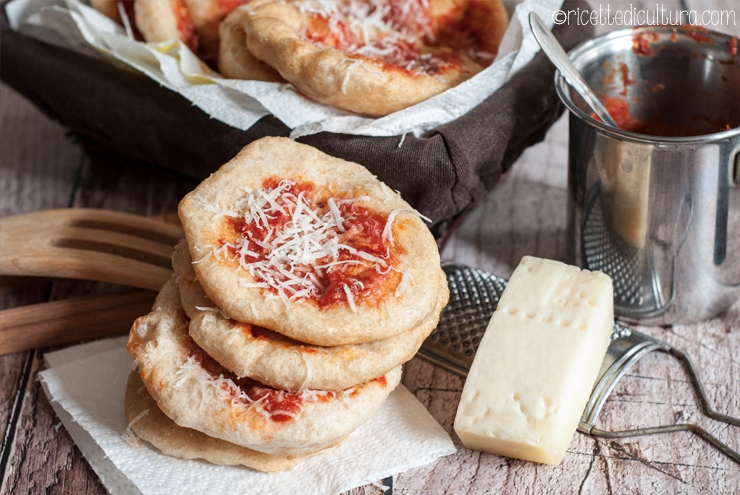Pasta carbonara, the queen of Rome Pasta carbonara is an extremely simple and straightforward dish: try it!
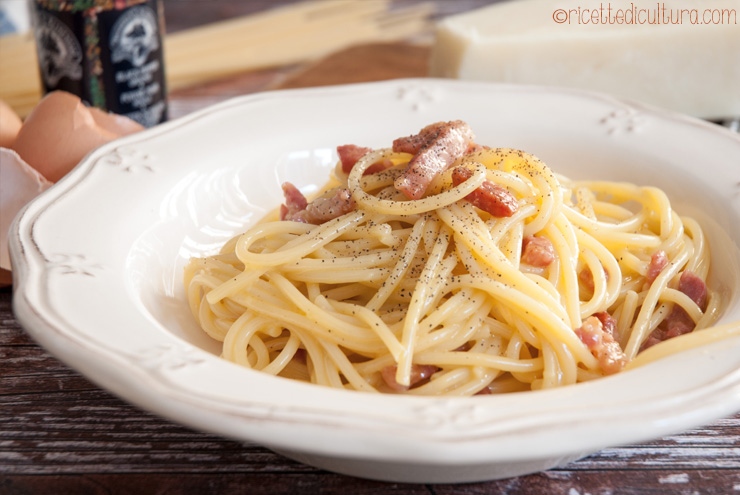
Pasta Carbonara is the true queen of Rome and its region’s culinary traditions, with an area of influence that reaches as far as the Apennines.
Ingredients
The ingredients are clear and undiscussed: guanciale, eggs, Roman pecorino cheese, salt and pepper.
No onions, no cooking wine: pasta carbonara is an extremely simple and straightforward dish, which is reflected in its ingredients.
The guanciale, a typical meat of the zone which was impossible to find outside the region of Lazio up until a couple of years ago, may be substituted, not without sighs of resignation, with pancetta. The reasons for this will be explained later… But in case of this substitution, it is recommended to add a small amount of extra virgin olive oil to facilitate sizzling.
The Roman Pecorino is not parmigiano… Of course, the sentence seems redundant, but it has to be emphasized that the Pecorino’s strong flavour works wonderfully with the Carbonara, so much so that the pasta only uses salt in its cooking water.
Since we’re at it, let’s talk about the pasta itself: wise people say spaghetti or rigatoni. I personally prefer spaghetti, though they are harder to manage.
The birth of the Carbonara
Its origin is controversial, since, regardless the simplicity of its ingredients, it seems to have been “invented” and standardized relatively recently. There are three main hypotheses about its birth.
The first tells that the dish was born in the Apennines from the hands of coal workers, locally known as “carbonai” or “carbonari” in the local language: they had to continuously keep an eye on cinders to do their job, so they couldn’t distract themselves by preparing intricate food. They often brought homemade “cacio e ova” (cheese and eggs) and kept it in a small container. They didn’t use oil, as it was expensive, instead opting for guanciale or bacon. This means the name “carbonara” does not come from the soot in which its inventors worked, but from the pepper that covered the piece of guanciale and was used as a preservative.
The second hypothesis finds the pasta’s origins in a chain of recipes coming from the culinary tradition of the Napolitan Republic or Partenopean Republic which added (post-roasting) a special sauce made from eggs, cheese and pepper — it is not used in surrounding traditions, which makes it unique to the napolitan region, and has been around way before the appearance of the famous recipe book that Ippolito Cavalcanti published in 1837.
The last hypothesis is the one that places the birth of the dish in the post-1944 region of Lazio, during Allied presence. In central Italy, ravaged by global conflict, the general population was dependent on military rations distributed by US soldiers. The rationed eggs were lyophilized, which gave the idea to turn them into a sauce to use to cook pasta — now with bacon, not guanciale. This is the reason why the pancetta alternative can be accepted, though it is not recommended.
In favor of this hypothesis is the absence of pasta carbonara from the 1930 roman recipe book by Ada Boni.
The Recipe
- Some find it hard to make a perfectly fluid and smooth: let’s see how we can.
- To start, let’s destroy the uncooked egg myth: boiling pasta is thrown onto the yolk sauce, then partially cooks it, pasteurizing it quickly in 15 to 20 seconds, at 75 C°.
- We must also keep in mind that salmonella loves to hitchhike rides onto egg whites, but not yolks; therefore, remembering basic higene rules, using as fresh an egg as possible and bringing its temperature to 75 C° the danger should be easily avoided. Don’t use carbonara for weaning, that’s the only advice I’m giving on the matter!
- The condiment for pasta is prepared while the water gets to the boiling point and the pasta cooks.
- Add some oil or butter to the guanciale (or pancetta) before being added to a lively fire until becoming slightly crispy; if you’re using pancetta, you may add a small amount of oil onto the frying pan.
When it is nice and ready, close the fire so that it doesn’t dry up too much. - Beat the egg yolks with grated Pecorino, a speck of salt and a teaspoon of egg white, creating a very dense substance. Make sure to do so in a spacious bowl, where you will then spice up the pasta.
- I use one yolk and 2 spoons of grated Pecorino for each person; regarding the guanciale, it’s around 40g per person.
- Drain the pasta when al dente, keeping a part of the water, and let it gain flavor in the frying pan of the guanciale, in lively fire, for a minute or so, so that every piece of spaghetti gets nice and greasy. At this point — always moving them around — put the boiling spaghetti with the eggs and pecorino, adding a couple of spoons of the water we used to boil the pasta. The cream makes itself.
Bring the whole to the table and add some pepper directly onto the plates.
